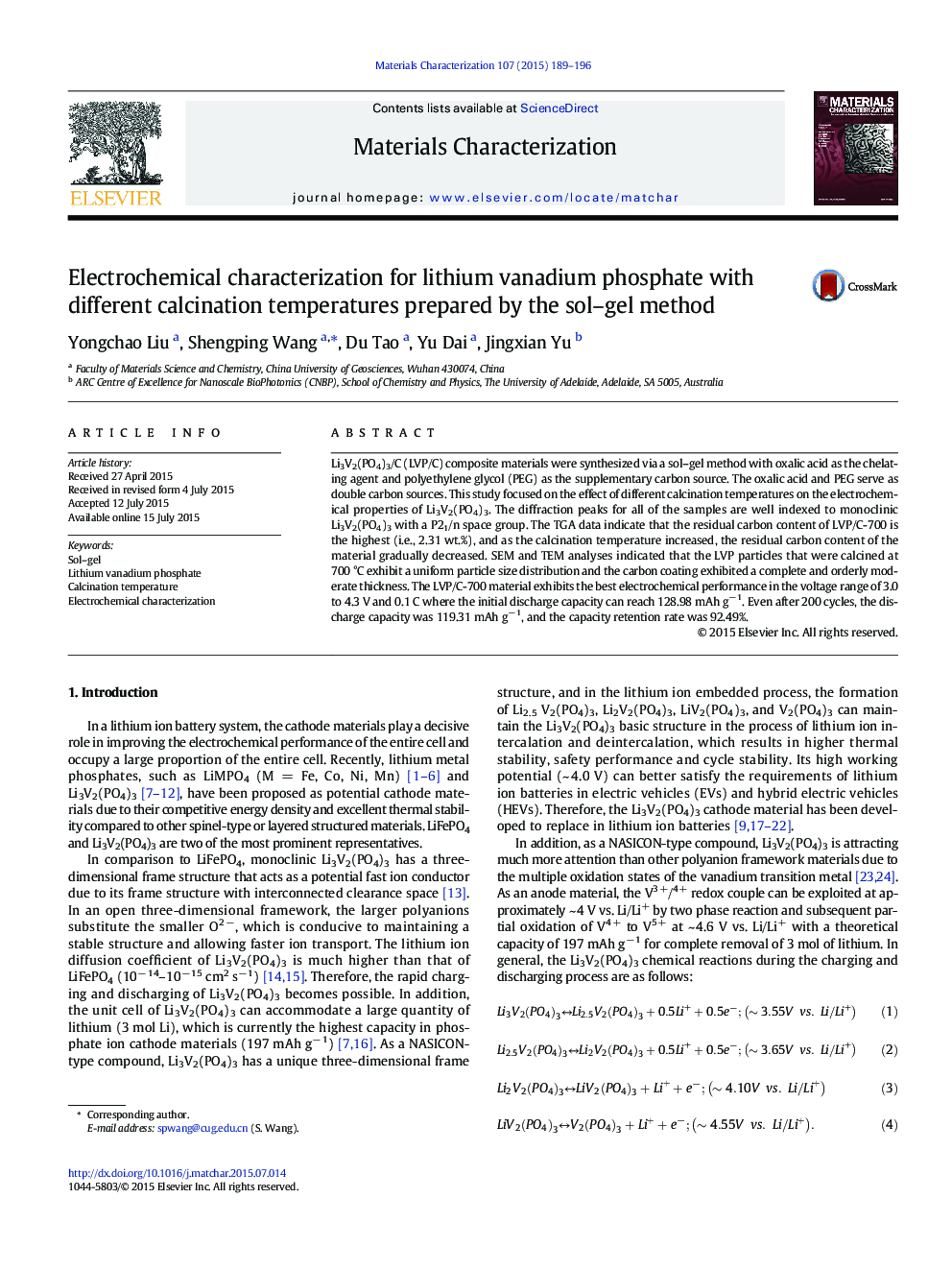| Article ID | Journal | Published Year | Pages | File Type |
|---|---|---|---|---|
| 7970171 | Materials Characterization | 2015 | 8 Pages |
Abstract
Li3V2(PO4)3/C (LVP/C) composite materials were synthesized via a sol-gel method with oxalic acid as the chelating agent and polyethylene glycol (PEG) as the supplementary carbon source. The oxalic acid and PEG serve as double carbon sources. This study focused on the effect of different calcination temperatures on the electrochemical properties of Li3V2(PO4)3. The diffraction peaks for all of the samples are well indexed to monoclinic Li3V2(PO4)3 with a P21/n space group. The TGA data indicate that the residual carbon content of LVP/C-700 is the highest (i.e., 2.31 wt.%), and as the calcination temperature increased, the residual carbon content of the material gradually decreased. SEM and TEM analyses indicated that the LVP particles that were calcined at 700 °C exhibit a uniform particle size distribution and the carbon coating exhibited a complete and orderly moderate thickness. The LVP/C-700 material exhibits the best electrochemical performance in the voltage range of 3.0 to 4.3 V and 0.1 C where the initial discharge capacity can reach 128.98 mAh gâ 1. Even after 200 cycles, the discharge capacity was 119.31 mAh gâ 1, and the capacity retention rate was 92.49%.
Related Topics
Physical Sciences and Engineering
Materials Science
Materials Science (General)
Authors
Yongchao Liu, Shengping Wang, Du Tao, Yu Dai, Jingxian Yu,
